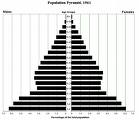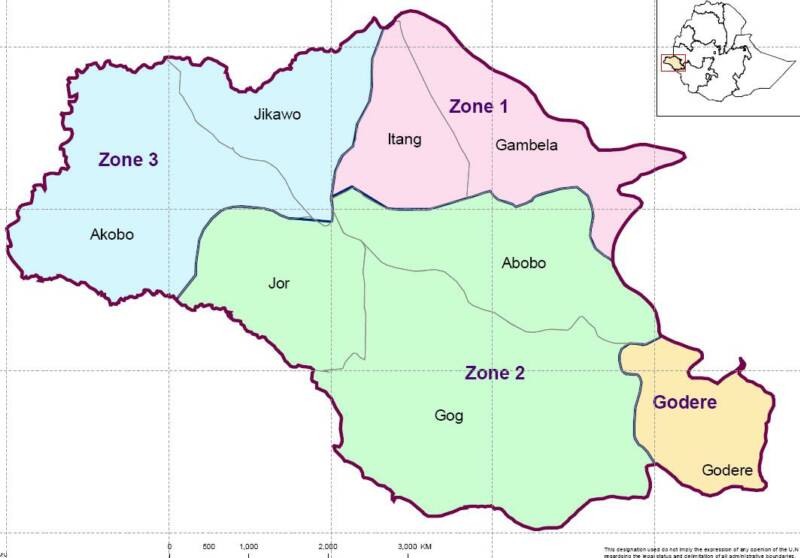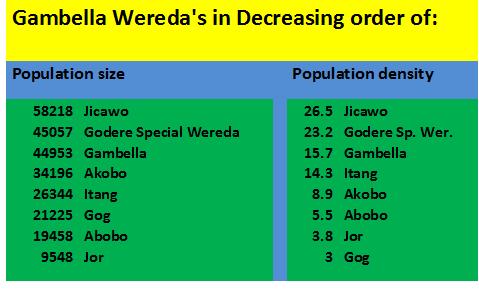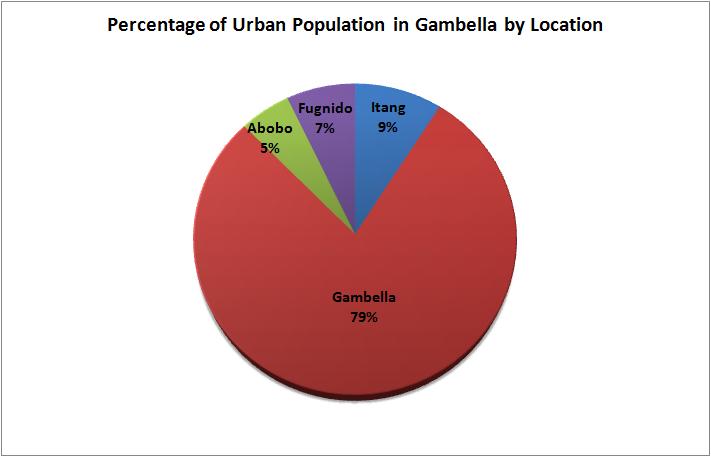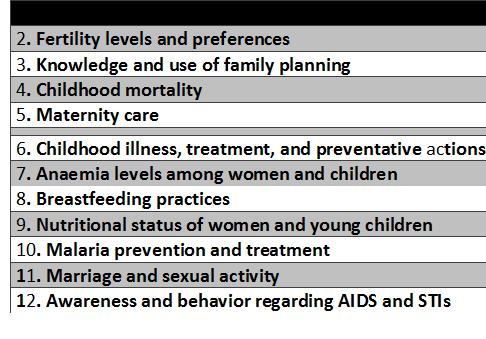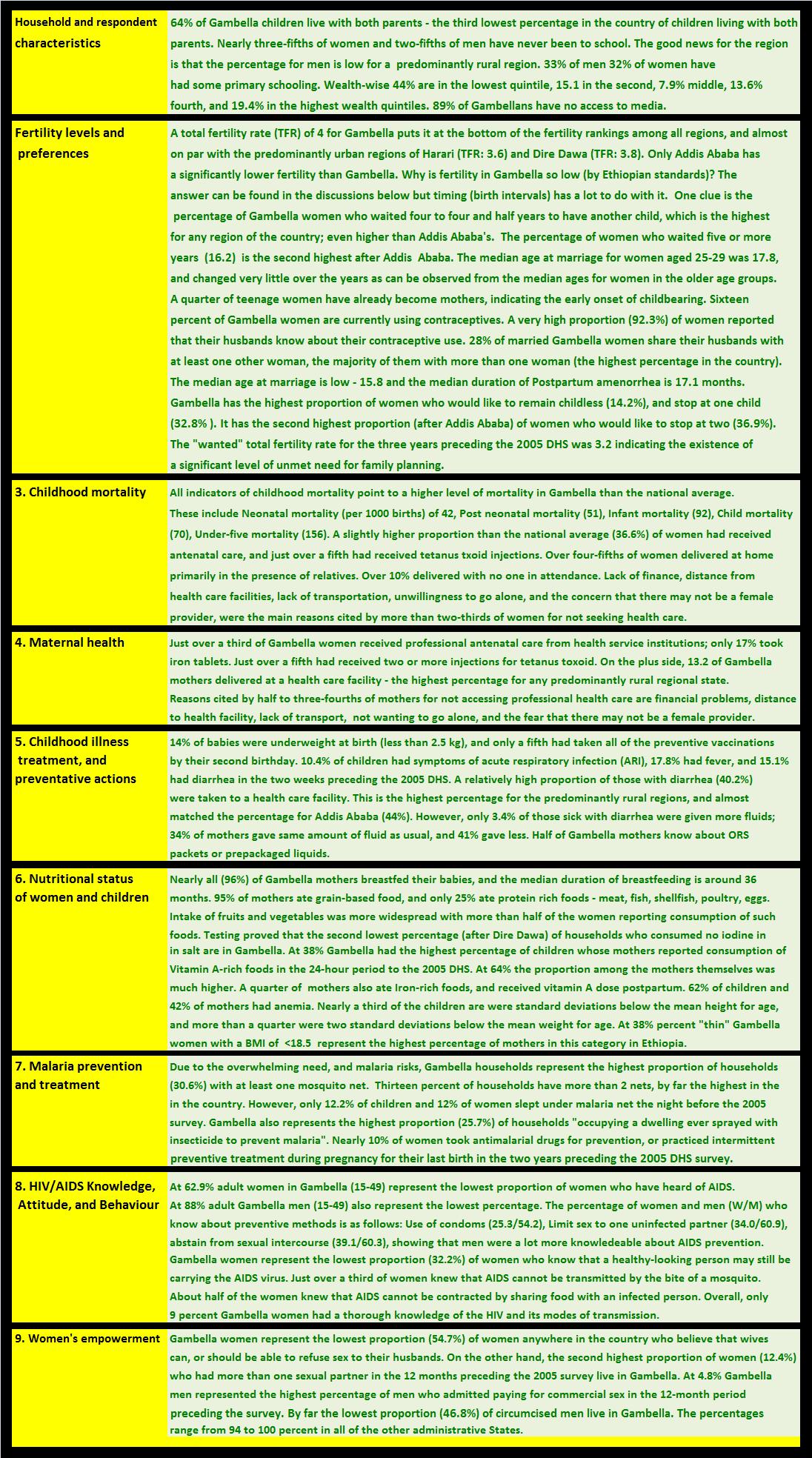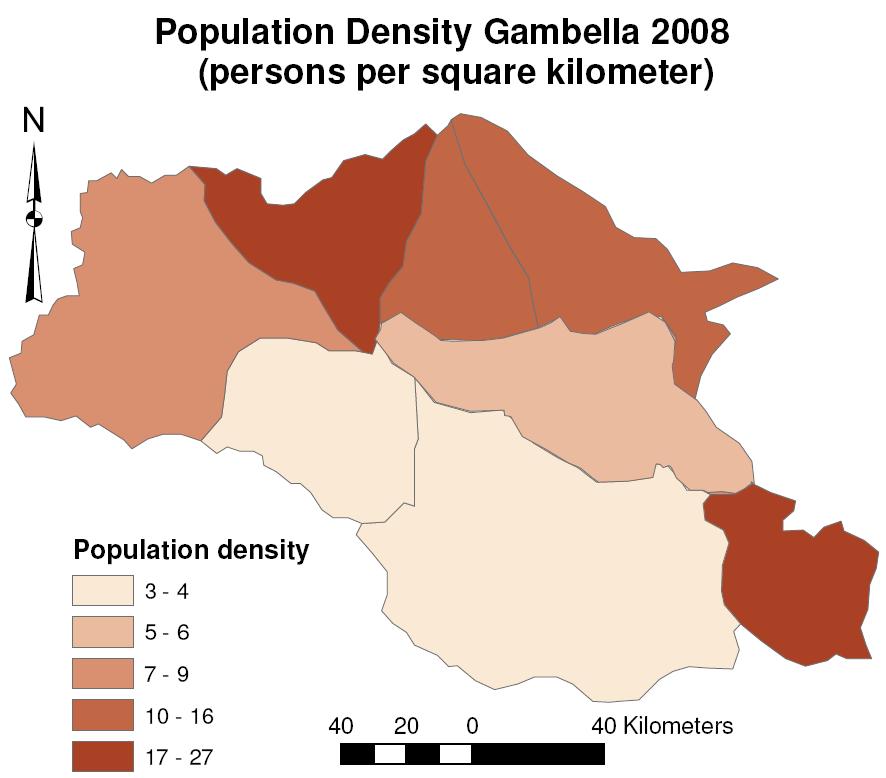Ethiopian Demography and Health
Gambella
Gambella National Regional State is one of the 11 administrative regions. It is located in the south-western part of Ethiopia and borders two other regions - Oromiya to the North and east and the Southern Nations, Nationalities and Peoples’ Regional State (SNNPRS) to the south - and the country of Sudan to the west. Most of Gambella is flat and its climate is hot and humid. Annual rainfall averages about 600 mm while the minimum/ maximum temperatures are are approximately 21.10C and 35.90C respectively. [1]
Ago-ecologically, the region is predominantly lowland (kolla) "...with a few midlands (weynadega). Recession riverside agriculture is common, particularly maize and sorghum, and widely practiced by Anyuaa people along the Baro, Gilo and Akobo rivers. As the region is generally not cereal self-sufficient, alternative income sources such as fishing are important sources of food. Wild food consumption is part of the daily dietary intake given the still partly untouched bush land and natural forest resources.” [2]
The latest CSA estimate (July 2008) puts Gambella’s population size at 259,000 a fifth of whom live in urban areas, and despite its relatively small area size the region is quite diverse, ethnically [3]. The major ethnic groups include the Nuer (40%), Agnuak (27%), Amhara (8%), Oromo (6%), Mezhenger (5.8%), Keffa (4.1%), Mocha (2%), Tigraway ( 1.6%) and other ethnic groups predominantly from Southern Ethiopia (5.5%). [3]
Gambella zone was divided into nine Weredas until recently: Akobo, Jikawo, Itang, Gambella, Abobo, Jor, Gog, Dimma and Godere. “However, administrative redistricting occurred in 2004-2005” [2]. The new administrative setup consists of six weredas and one “special” Wereda administered by the Federal government: Alwero-Peno, Gilo, Jikawo, Akobo, Dimma, Godere and Gambella (special). “The Gambella region today has three Anuak Woredas (Alwero-Peno, Dimma and Gilo); two Nuer Woredas (Jikawo and Akobo); and one Majenger Woreda (Godere).” [4]
Ethnic and political tensions
Refugee populations were estimated at between 150,000 and 350,000 in the 1980s, thus outnumbering the local population at times until the fall of the Derg in 1991. The Derg government favored the Nuer over the Anuak and the Nuer dominated the local political scene until 1991. The armed struggle to overthrow the Derg took the form, locally, of an “….alliance between Anuak insurgents, including the Gambella People’s Liberation Movement (GPLM), the Oromo Liberation Front (OLF), and the Ethiopian Peoples Democratic Revolutionary Front (EPRDF), which seized power and controls the country today….”.[4] Anuak grievances continued, however, and the region has witnessed increasing violence and armed conflicts in the 1990s and since 2000.
“Faced with their perceptions of being increasingly pushed off their own land and marginalized by the political system….. Anuaks began to pursue their grievances by military means as early as 1992. Major military confrontations between the GPLF and EPRDF forces occurred as early as 1993….. An escalation in reprisal attacks between the Highlander settler population and the indigenous Anuak people (primarily caused by land rights issues as discussed above) in the region led to an explosion of violence between these two. Following the May 2005 elections, the region has recently appointed Anuak President, supported by a Nuer Vice-President. Other key posts in the regional government are distributed amongst the indigenous groups depending upon their relative population size.” [4]
Economy
“Ninety percent of the population of Gambella is rural and most of the people are thus subsistence farmers, selling some of their produce on local markets.” Other economic activities include coffee cultivation, exploration for gold (Dimma Wereda), continued work on the remaining state farms (primarily cotton in Alwero-Peno Wereda), and exploration for oil by Malaysian and Chinese companies [4]. The Anuak “…are mainly crop dependent people with fishing and hunting as their supplementary income sources[while the Nuer] are largely livestock dependent” [2] As elsewhere in the country the pressure on land has increased due to the doubling of the population in the last quarter century as well as the resettlement, in the Gambella region, of highland populations from other regions namely, Amhara, Tigray, and SNNP. “Population has increased, but farming techniques have not changed and the land that is used is believed to be overused. The problem is exacerbated by insecurity, as government schemes to address farming issues—such as the National Agricultural Extension Package—do not reach most places in Gambella.” [4]
Health Care:
“There are 21 functioning clinics, one hospital and seven functioning health centres. They, like the staff, tend to be centred in the more peaceful areas, or in one or two of the larger towns. At one extreme eight of the 29 facilities are in Godere woreda; at the other extreme there is only one functional clinic in Akobo woreda, and one functional clinic and one functional health centre in Jekew woreda. As a comparison, prior to 2003 there were a total of 11 functional health facilities in Jekew woreda. One of the results of the above is that access to health care—in an area where other infrastructure problems (education, water, transport, etc…) exacerbate health problems—is even poorer than the already poor national coverage around the country.” [4] The educational system too is being hampered in its mission to spread literacy including healthy living practices by lack of resources which have led to poor enrollment numbers and rampant teacher absenteeism.
“Many of the areas visited in the context of this study have no schools, while others have school buildings but no tools for teaching. Many of the teachers who once staffed the schools have left their home villages due to insecurity. In some places the ENDF have occupied the school facility, and at times they have destroyed desks and chairs, and burned books. In villages where there is no school, parents are reluctant or unwilling to send their children to the nearest school in other villages, due to insecurity. Even where security permits, lack of income prohibits families from sending their children off to distant schools. …..In places where schools exist, in most cases they only reach up to grade 6 or grade 8; for secondary schooling, the children have to go to Gambella town. Many rural families cannot afford to send their children to school in Gambella town, and this contributes to dramatic undereducation in the region.” [4].
Population Distribution
The table below lists administrative Weredas in Gambella by decreasing population size and density. Jicawo with a population of 58218 and Abobo with nearly 20000 people represent the most and least populated Weredas. Density-wise (population per square kilometers) Jicawo tops all Weredas as the densest of all, but 26.5 is still a very low number compared to most other Weredas in the rest of the country. With single-digit density values, Akobo, Abobo, Jor, and Gog are among the least densely populated weredas (also see map below).
Source: [5]
Close to 17 percent of Gambellans live in urban areas most of them (over three-quarters) in the regional capital Gambella (see Figure below).
Demographic Characteristics
The summary below is a compilation based on the 2005 Demographic and Health Survey (DHS) results. The topics include the following [5]:
Source: [6]
References:
1. http://www.ethiopar.net/
http://www.ethiopar.net/
2. Abraham Sewonet. Breaking the Cycle of Conflict in Gambella Region. UN Emergencies Unit for Ethiopia. 2002.
Abraham Sewonet. Breaking the Cycle of Conflict in Gambella Region. UN Emergencies Unit for Ethiopia. 2002.
3. http://flagspot.net/flags/et-ga.html
http://flagspot.net/flags/et-ga.html
4. UNICEF. Livelihoods and Vulnerabilities Study, Gambella Region of Ethiopia. 2006.
UNICEF. Livelihoods and Vulnerabilities Study, Gambella Region of Ethiopia. 2006.
5. http://www.csa.gov.et/text_files/national%20statistics%202007/Population.pdf
http://www.csa.gov.et/text_files/national%20statistics%202007/Population.pdf
6. Ethiopia Demographic and Health Survey 2005 Central Statistical Agency, Addis Ababa, Ethiopia , RC Macro,
Ethiopia Demographic and Health Survey 2005 Central Statistical Agency, Addis Ababa, Ethiopia , RC Macro,
Calverton, Maryland, USA, September 2006
Source: http://www.ocha-eth.org/Maps/downloadables/BENESHANGUL.pdf
Source: Based on 5
If you would like to help update this page, please send comments and/or data (as an e-mail attachment) to the author:
Dr. Aynalem Adugna
at aynalemadugna@aol.com. Don't forget to indicate sources.
